Potrebujeme váš súhlas na využitie jednotlivých dát, aby sa vám okrem iného mohli ukazovať informácie týkajúce sa vašich záujmov. Súhlas udelíte kliknutím na tlačidlo „OK“.
ASTM C1105-08a
Standard Test Method for Length Change of Concrete Due to Alkali-Carbonate Rock Reaction (Includes all amendments And changes 12/23/2016).
Automaticky preložený názov:
Štandardná skúšobná metóda pre dĺžku Zmena betónu Kvôli Alkalické uhličitanu rock reakcie
NORMA vydaná dňa 1.12.2008
Informácie o norme:
Označenie normy: ASTM C1105-08a
Poznámka: NEPLATNÁ
Dátum vydania normy: 1.12.2008
Kód tovaru: NS-9523
Počet strán: 4
Približná hmotnosť: 12 g (0.03 libier)
Krajina: Americká technická norma
Kategória: Technické normy ASTM
Kategórie - podobné normy:
Anotácia textu normy ASTM C1105-08a :
Keywords:
Alkali reactivity, Calcitic dolomites, Carbonate aggregates, Cement-aggregate combinations, Change in length, Coarse aggregate, Concrete--specifications, Dolomitic limestone, Expansion--concrete materials/applications, Lime materials/applications, ICS Number Code 91.100.30 (Concrete and concrete products)
Doplňujúce informácie
| Significance and Use | ||||||||||||||||||||||||||||
|
Two types of alkali reactivity of aggregates have been described in the literature: the alkali-silica reaction involving certain siliceous rocks, minerals, and artificial glasses (1), and the alkali-carbonate reaction involving dolomite in certain calcitic dolomites and dolomitic limestones (2). This test method is not recommended as a means to detect combinations susceptible to expansion due to alkali-silica reaction since it was not evaluated for this use in the work reported by Buck (2). This test method is not applicable to aggregates that do not contain or consist of carbonate rock (see Descriptive Nomenclature C 294). This test method is intended for evaluating the behavior of specific combinations of concrete-making materials to be used in the work. However, provisions are made for the use of substitute materials when required. This test method assesses the potential for expansion of concrete caused by alkali-carbonate rock reaction from tests performed under prescribed laboratory curing conditions that will probably differ from field conditions. Thus, actual field performance will not be duplicated due to differences in wetting and drying, temperature, other factors, or combinations of these (see Appendix X1). Use of this test method is of particular value when samples of aggregate from a source have been determined to contain constituents that are regarded as capable of participation in a potentially deleterious alkali-carbonate rock reaction either by petrographic examination, Guide C 295, by the rock cylinder test, Test Method C 586, by service record; or by a combination of these. Results of tests conducted as described herein should form a part of the basis for a decision as to whether precautions be taken against excessive expansion due to alkali-carbonate rock reaction. This decision should be made before a particular cement-aggregate combination is used in concrete construction (see Note 1). Note 1—Other elements that may be included in the decision-making process for categorizing an aggregate or a cement-aggregate combination with respect to whether precautions are needed, and examples of precautions that may be taken, are described in Appendix X1. While the basic intent of this test method is to develop information on a particular cement-aggregate combination, it will usually be very useful to conduct control tests in parallel using the aggregate of interest with other cements or the cement of interest with other aggregates. |
||||||||||||||||||||||||||||
| 1. Scope | ||||||||||||||||||||||||||||
|
1.1 This test method covers the determination, by measurement of length change of concrete prisms, the susceptibility of cement-aggregate combinations to expansive alkali-carbonate reaction involving hydroxide ions associated with alkalies (sodium and potassium) and certain calcitic dolomites and dolomitic limestones. 1.2 The values stated in SI units are to be regarded as the standard. No other units of measurement are included in this standard. When combined standards are cited, the selection of measurement system is at the user's discretion subject to the requirements of the referenced standard. 1.3 This standard does not purport to address all of the safety concerns, if any, associated with its use. It is the responsibility of the user of this standard to establish appropriate safety and health practices and determine the applicability of regulatory limitations prior to use. |
||||||||||||||||||||||||||||
| 2. Referenced Documents | ||||||||||||||||||||||||||||
|
Podobné normy:
Historická
1.8.2008
Historická
1.8.2008
Historická
1.2.2008
Historická
1.6.2014
Historická
1.6.2010
Historická
1.7.2011
Odporúčame:
Aktualizácia zákonov
Chcete mať istotu o platnosti využívaných predpisov?
Ponúkame Vám riešenie, aby ste mohli používať stále platné (aktuálne) legislatívne predpisy
Chcete vedieť viac informácií ? Pozrite sa na túto stránku.



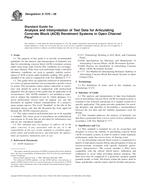 ASTM D7276-08
ASTM D7276-08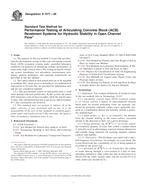 ASTM D7277-08
ASTM D7277-08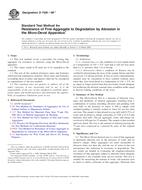 ASTM D7428-08e1
ASTM D7428-08e1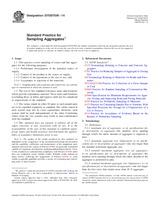 ASTM D75/D75M-14..
ASTM D75/D75M-14..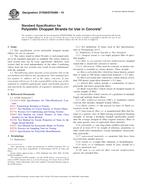 ASTM D7508/D7508M-10..
ASTM D7508/D7508M-10..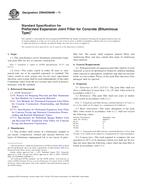 ASTM D994/D994M-11..
ASTM D994/D994M-11..
 Cookies
Cookies
